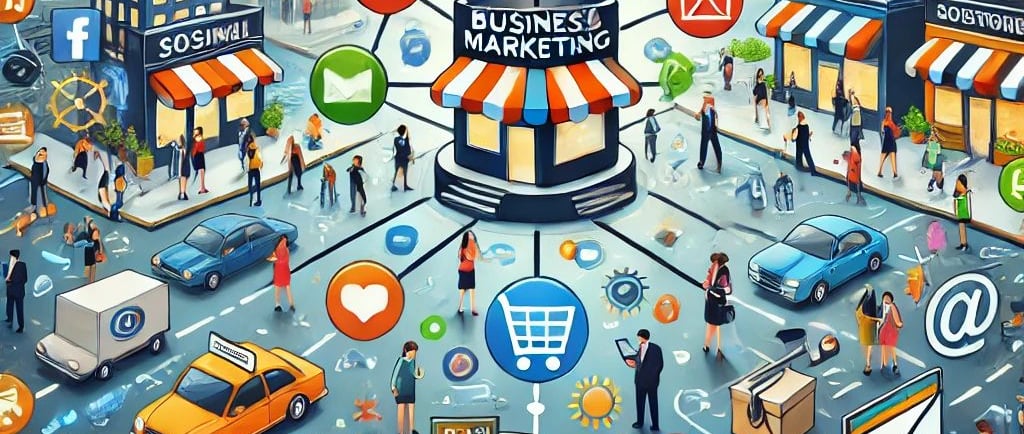Multichannel Marketing: Reaching Audiences Everywhere They Are
In today’s fast-paced, interconnected world, customers interact with brands across a variety of platforms and devices. From social media and websites to email and in-store experiences, the customer journey is no longer linear. To keep up, brands need to adopt multichannel marketing—a strategy that ensures seamless and consistent messaging across all touchpoints.
Hessam Mahmoodi
1/10/20253 min read


Multichannel marketing is not just a buzzword; it’s a necessity for businesses that want to thrive in an increasingly competitive marketplace. Here’s a closer look at what it is, why it matters, and how to create an effective multichannel strategy.
What Is Multichannel Marketing?
Multichannel marketing is the practice of engaging with customers across multiple channels—both online and offline—to create a cohesive brand experience. These channels can include:
• Websites
• Social media platforms
• Email campaigns
• Physical stores
• Mobile apps
• SMS messaging
• Digital ads
• Print media
Unlike single-channel marketing, which focuses on one platform, multichannel marketing embraces the fact that today’s consumers move fluidly between devices and platforms.
Why Multichannel Marketing Matters
1. Reaching Customers Where They Are
Customers aren’t confined to one platform. By leveraging multiple channels, you can meet them where they spend their time—whether it’s Instagram, a favorite blog, or even their email inbox.
2. Consistent Brand Messaging
A multichannel approach ensures that your messaging stays consistent, regardless of where the customer interacts with your brand. Consistency builds trust and strengthens brand identity.
3. Improved Customer Experience
A seamless experience across channels makes customers feel valued and understood. Whether they’re shopping online or visiting your store, the transition should feel effortless.
4. Enhanced Engagement
More channels mean more opportunities for engagement. For example, a customer might first see your ad on Facebook, click a link to your website, and then sign up for your newsletter—all steps toward conversion.
5. Data-Driven Insights
With multichannel marketing, you can collect data from various platforms to gain a deeper understanding of your audience. This helps refine your strategy and improve ROI.
Building an Effective Multichannel Marketing Strategy
1. Know Your Audience
Start by identifying your audience’s preferences, behaviors, and pain points. Which platforms do they use most? What type of content resonates with them?
2. Choose the Right Channels
You don’t need to be on every platform. Focus on the ones that align with your audience and goals. For example, if your target market skews younger, platforms like Instagram and TikTok might be ideal.
3. Create Cohesive Messaging
While the tone and style may vary across channels, your brand voice and messaging should remain consistent. This helps reinforce your identity and avoids confusion.
4. Leverage Automation
Tools like customer relationship management (CRM) software and email marketing platforms make it easier to manage campaigns across channels. Automation can save time and ensure timely delivery.
5. Analyze and Optimize
Use analytics tools to track performance across all channels. Pay attention to metrics like engagement rates, conversions, and customer feedback to identify what’s working—and what isn’t.
Examples of Multichannel Marketing in Action
1. Starbucks
Starbucks excels at multichannel marketing by integrating its mobile app, in-store experiences, and social media campaigns. Customers can earn rewards through the app, get personalized offers via email, and engage with the brand on Instagram—all seamlessly connected.
2. Nike
Nike’s campaigns span websites, mobile apps, in-store events, and digital ads. Their personalized email campaigns complement the engaging content they share on social media, creating a unified experience.
3. Amazon
Amazon combines its website, app, email, and social media to create a tailored shopping experience. Personalized product recommendations appear across multiple channels, ensuring relevance at every touchpoint.
Challenges of Multichannel Marketing
While the benefits are clear, multichannel marketing isn’t without challenges:
• Managing Consistency: Ensuring cohesive messaging across platforms can be complex.
• Resource Allocation: Maintaining multiple channels requires time, money, and skilled personnel.
• Data Integration: Consolidating data from various sources into actionable insights can be difficult without the right tools.
Overcoming these challenges requires strategic planning, robust tools, and a clear focus on the customer experience.
Conclusion
Multichannel marketing is a powerful strategy for building stronger customer relationships, increasing engagement, and driving conversions. By meeting your audience where they are and delivering a consistent experience across platforms, you can create a unified brand presence that stands out in today’s competitive landscape.
As consumer behavior continues to evolve, embracing multichannel marketing isn’t just an option—it’s the key to staying relevant and successful. Start building your strategy today and ensure your brand is everywhere your customers want you to be.
Socials
Follow our socials for updates!
CONTACT
Connect
© 2025. All rights reserved @ MLT Marketerra Marketing Solutions.
